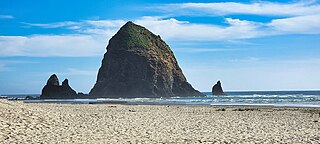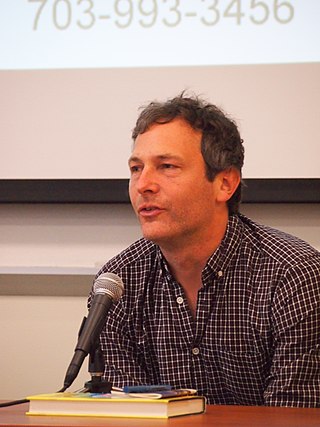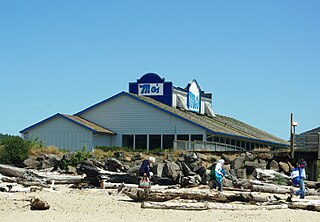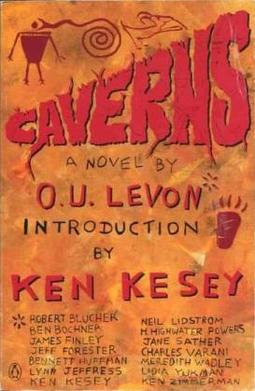
Ken Elton Kesey was an American novelist, essayist and countercultural figure. He considered himself a link between the Beat Generation of the 1950s and the hippies of the 1960s.

Henry Jaynes Fonda was an American actor whose career spanned five decades on Broadway and in Hollywood. On screen and stage, he often portrayed characters that embodied an everyman image.

Paul Leonard Newman was an American actor, film director, racing driver, philanthropist, and entrepreneur. He was the recipient of numerous awards, including an Academy Award, a BAFTA Award, three Golden Globe Awards, a Screen Actors Guild Award, a Primetime Emmy Award, a Silver Bear, a Cannes Film Festival Award, and the Jean Hersholt Humanitarian Award.

Lumberjack is a mostly North American term for workers in the logging industry who perform the initial harvesting and transport of trees. The term usually refers to loggers in the era before 1945 in the United States, when trees were felled using hand tools and dragged by oxen to rivers.
The Merry Pranksters were followers of American author Ken Kesey. Kesey and the Merry Pranksters lived communally at Kesey's homes in California and Oregon, and are noted for the sociological significance of a lengthy road trip they took in the summer of 1964, traveling across the United States in a psychedelic painted school bus called Furthur, organizing parties, and giving out LSD. During this time they met many of the guiding lights of the 1960s cultural movement and presaged what are commonly thought of as hippies with odd behavior, tie-dyed and red, white, and blue clothing, and renunciation of normal society, which they dubbed The Establishment. Tom Wolfe chronicled their early escapades in his 1968 book The Electric Kool-Aid Acid Test, and documents a 1966 trip on Furthur from Mexico through Houston, stopping to visit Kesey's friend the novelist Larry McMurtry. Kesey was in flight from a drug charge at the time.

Furthur is a 1939 International Harvester school bus purchased by author Ken Kesey in 1964 to carry his "Merry Band of Pranksters" cross-country, filming their counterculture adventures as they went. The bus featured prominently in Tom Wolfe's 1968 book The Electric Kool-Aid Acid Test but, due to the chaos of the trip and editing difficulties, footage of the journey was not released as a film until the 2011 documentary Magic Trip.

Richard Jaeckel was an American actor of film and television. Jaeckel became a well-known character actor in his career, which spanned six decades. He received an Academy Award nomination for Best Supporting Actor with his role in the 1971 adaptation of Ken Kesey's Sometimes a Great Notion.

Haystack Rock is a 235 ft-tall (72 m) sea stack in Cannon Beach, Oregon. It is often stated locally to be the third-tallest such intertidal structure in the world, but there are no supporting credible references for this claim. A popular tourist destination on the Oregon Coast, the monolithic rock is adjacent to the beach and accessible by foot at low tide. The Haystack Rock tide pools are home to many intertidal animals, including starfish, sea anemone, crabs, chitons, limpets, and sea slugs. The rock is also a nesting site for many sea birds, including terns and puffins.

Michael Sarrazin was a Canadian actor. His most notable film was They Shoot Horses, Don't They?.

Jonathan Raymond, usually credited Jon Raymond, is an American writer living in Portland, Oregon. He is best known for writing the novels The Half-Life and Rain Dragon, and for writing the short stories and novels adapted for the films Old Joy, Wendy and Lucy, and First Cow, all directed by Kelly Reichardt, with whom he co-wrote the screenplays.
Stamper is a surname. Notable people with the surname include:

Kernville is an unincorporated community in Lincoln County, Oregon, United States. It is located near the intersection of U.S. Route 101 and Oregon Route 229, where the Siletz River enters Siletz Bay. There are two communities, known as "old" and "new" Kernville, in close proximity. Old Kernville is considered a ghost town.

Sometimes a Great Notion is the second novel by American author Ken Kesey, published in 1964. While One Flew Over the Cuckoo's Nest (1962) is more famous, many critics consider Sometimes a Great Notion Kesey's magnum opus. The story involves an Oregon family of gyppo loggers who cut trees for a local mill in opposition to unionized workers who are on strike.

Mo's Restaurants is an American restaurant chain located on the Oregon Coast and headquartered in Newport, Oregon. Mo's are named after their original owner Mohava "Mo" Niemi, who was once described as "the stuff of legend in Newport".

Caverns is a 1989 novel written collaboratively as an experiment by Ken Kesey and a creative writing class that he taught at the University of Oregon. The cover of the book says it was written by O.U. Levon—the name of this supposed author, spelled backwards, is "novel U.O.". The full list of authors is: Robert Blucher, Ben Bochner, James Finley, Jeff Forester, Bennett Huffman, Lynn Jeffress, Ken Kesey, Neil Lidstrom, H. Highwater Powers, Jane Sather, Charles Varani, Meredith Wadley, Lidia Yukman and Ken Zimmerman.
Melissa Stewart Newman, also known as Lissy Newman, is an American artist, singer and former actress who appeared in the 1990 film Mr. & Mrs. Bridge, and at the 30th Annual Primetime Emmy Awards.
Richard Anthony Colla, sometimes credited as Dick Colla, was an American film and television director and actor.
Lee Quarnstrom was an American journalist, executive editor of Larry Flynt’s Hustler Magazine, and a Beatnik. He was a core member of the Merry Band of Pranksters, a group loosely led by novelist Ken Kesey.

The Storyteller, also known as the Ken Kesey Memorial, is an outdoor bronze sculpture by Pete Helzer, installed at Kesey Square in Eugene, Oregon, in the United States. Unveiled in 2003, it depicts American novelist, essayist, and countercultural figure Ken Kesey reading to his three grandchildren, Kate Smith, Caleb Kesey and Jordan Smith. Plaques on the base of the sculpture contain excerpts from Kesey's novels One Flew Over the Cuckoo's Nest (1962) and Sometimes a Great Notion (1964).















